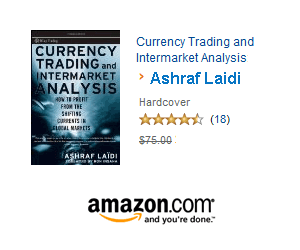Forum > View Topic
by Ashraf Laidi
Posted: Feb 20, 2010 5:00
Comments: 30765
Posted: Feb 20, 2010 5:00
Comments: 30765
Forum Topic:
EUR
Discuss EUR in this thread






Indeed ECB put pressure on eurusd.
But Draghi sees an improvement to come on inflation in april.
Price continues is rolling down shoulders, as forecast 8 days ago:
EURUSD - 4-Hour: https://www.tradingview.com/v/Y24HljyJ/
Considering a broader perspective (daily chart), price finds support at rising wedge as it nears the 8-day old bearish price target:
EURUSD - Daily: https://www.tradingview.com/x/xH6xVuAY/
Cheers,
David Alcindor
DRAGHI : INFLATION SHOULD BE WELL ABOVE IN APRIL
None of the "big" bank currency strategists know why ECB has not acted.
None of the "big" bank currency strategists know why they got their USD forecast wrong in Q1.
As I said many times before, Draghi wants to keep "hands off" mode as long as there is no crisis and no rising bond yields. So why resort to unusual policies such as QE or negative rates when Germans are opposed to these unless there is an emergency.
SO far, there is no emergency, and 0.5% CPI is not emergency.
Ashraf
see the gu nickline hit and Daily 22 day moving average
By Pierre Briancon APRIL 2, 2014
Email Print
ECB | EURO ZONE | EUROPEAN CENTRAL BANK | INFLATION | INTEREST RATES
By Pierre Briançon
The author is a Reuters Breakingviews columnist. The opinions expressed are his own.
There is only one question worth asking Mario Draghi right now: what does he intend to do to boost inflation? The European Central Bank of which he is president is failing at its only mandate – maintaining price stability in the euro zone, defined as a rate of inflation “below but close” to 2 percent. The most recent numbers – inflation last month was at an annual rate of 0.5 percent, and prices have risen 1.2 percent in the last 12 months – is nowhere near the target. And judging by the ECB’s own forecast, the rate won’t get much nearer by 2016. Real deflation remains, so far, a low-risk scenario. But economies like Spain or Greece are suffering from the ECB’s inaction. And is even a small risk of dangerous deflation worth taking? Acting now could spare the ECB more aggressive policies later. What’s the upside of playing with fire?
After the ECB chose not to do anything in March, members of the governing council rushed to insist that many options remain on the table. The main interest rate can still be cut, although not by much as it now stands at 0.25 percent. That may have to come with a negative deposit rate, with the risk of unintended adverse consequences.
Another long-term refinancing operation (LTRO) would offer banks liquidity that they aren’t really seeking. But an idea doing the rounds is that locking in a low, fixed interest rate on it would signal a long-term commitment to dovish policies. Previous LTROs had a variable rate, calculated ex-post.
Finally, the purchase of private assets is openly contemplated. This “credit easing,” as Credit Agricole analysts call it, is legally and politically easier than the “quantitative easing” of direct government bond purchases.
None of these options is ideal, but their flaws are not great enough to justify the ECB’s benign neglect. The central bank’s official line is that the asset quality review of euro zone banks, expected later this year, is its main instrument to ease credit conditions. Even if that’s true, the central bank can do more, sooner to help Europe’s most challenged economies. It is yet to answer the question: why wait?
You are welcome to check my profile online:
David Alexandre Alcindor
aka: dalcindo (my college email)
aka: 4xForecaster on TradingView.com
aka: @4xForecaster as my Twitter handle
I hope this help clears things out my friend.
Cheers,
David Alcindor